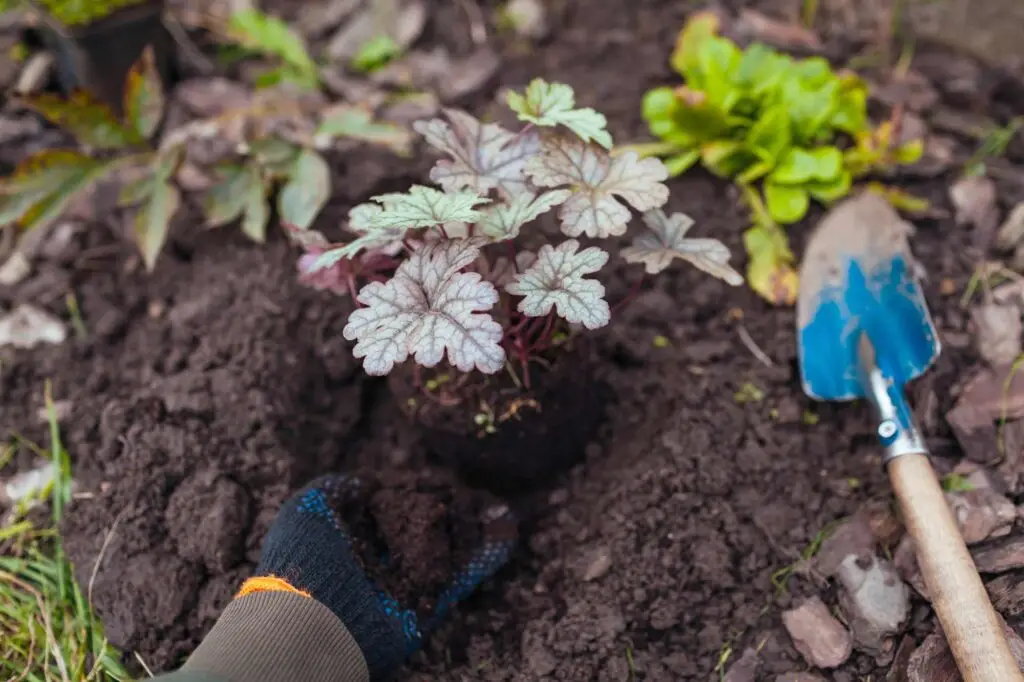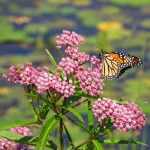A plant is established when its roots are happily integrated with the soil and the stems, leaves, or trunk are strong enough to withstand normal wind and rain. This normally takes a year. During this first year, the plant will need water during dry spells or even staking to help it become ‘established.’ After a native plant is established, it will be happy with normal weather and watered via rain.

Getting a plant ‘established’ is crucial for a perennial plant to thrive and come back, year after year. During the first year after planting, the plant will need a little extra care to ensure what’s below ground and what’s above ground is healthy and strong. In this article, we’ll talk about what being ‘established’ means for plants, and what it takes to get a plant ‘established.’
Why does a plant need help to get ‘established?’
Plants don’t like to move
Plants normally grow in the same spot for years (even hundreds of years.) Moving is a big change for a plant and takes some extra care to make them feel at home.
Just think about it—every new plant comes from a greenhouse or garden environment, where they are (hopefully!) pampered and comfortable. And then…
- We take them out of this comfortable home or garden.
- We dig a hole in a new place, take them out of their pot and give them new dirt with new nutrients and new light.
- Sometimes this move cuts roots and breaks branches.
That’s a lot, right? When we think of it this way, we can quickly see why a plant needs a little extra help during its first year of growing.
After planting, give some extra assistance
After a move, it’s important to give the plant a little extra support to help it recover from the change, so its roots and shoots will be strong enough for growth in future years. When a plant’s roots and shoots are happy, it will spend its energy growing.
What happens when a plant does not get established?
When a plant is unhappy—it spends its energy on survival, not growing. This means it might not survive the season, or might not have enough strength to bloom or come back the following year.
How to get a native plant ‘established’
Getting a plant established has two parts:
- Watering
- Staking
During this first year, it’s important to pay attention to both. Let’s break these down into two goals.
Goal one: Water regularly
We made a simple chart to make this step easy:
For the first weeks
Water daily for the first two weeks (unless it rains)
After the first two weeks
Water during dry spells; if it hasn’t rained in two days, it’s time to water
Water during hot days
How to water
I bet you’re scrolling past this quickly with an eye-roll—but hear me out! Here are a few pointers to help keep your plants healthy and not waste water:
- Water deeply: you’re trying to reach the roots
- Water in the morning, if possible: this helps the water not evaporate in the daytime sun, and helps keep away mold that can come from evening watering
Goal Two: Staking
The plants we buy or are given are strong but may need a little bit of extra help in their new home to withstand normal wind and weather.
To help get a new plant established and strong, it may be necessary to add stakes to the sides of tall plants during the first year.
To sum it all up, the first year after planting a new plant requires a little extra care to get the plant ‘established.’ The term ‘established’ indicates when a plant’s roots are integrated with the soil and the plant’s stems/branches are strong enough to withstand normal weather and wind. After a native perennial plant is established, it will return happily for years to come. Happy planting!

